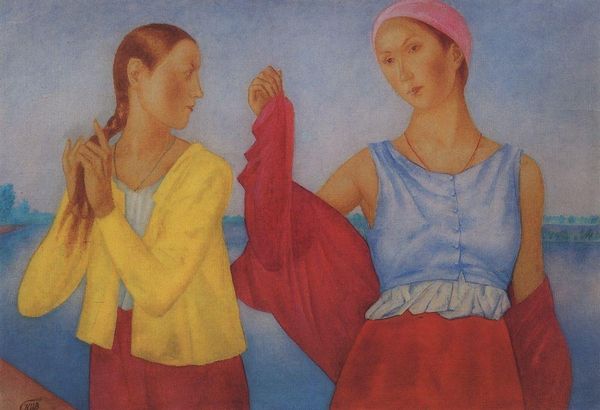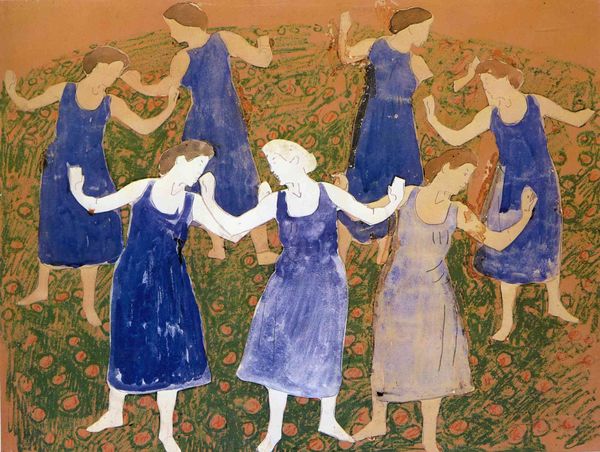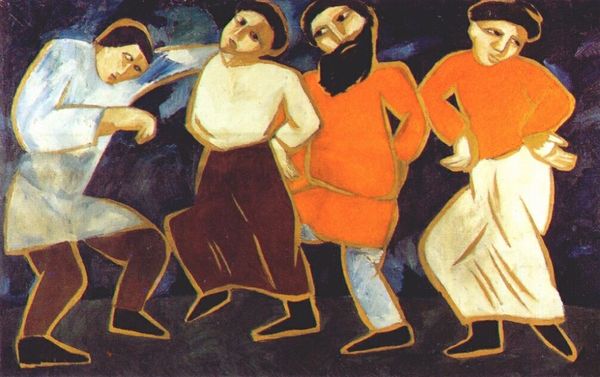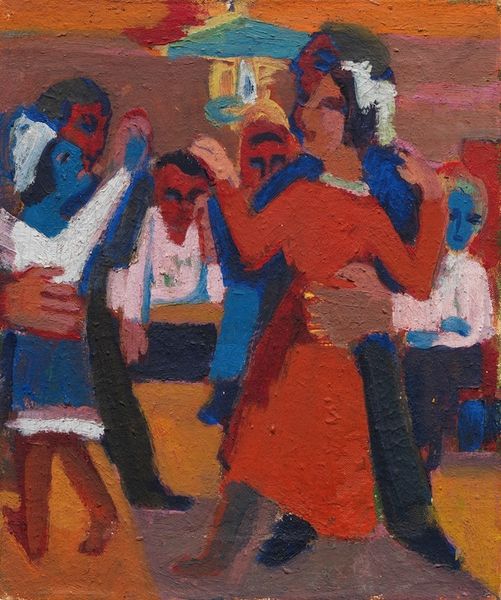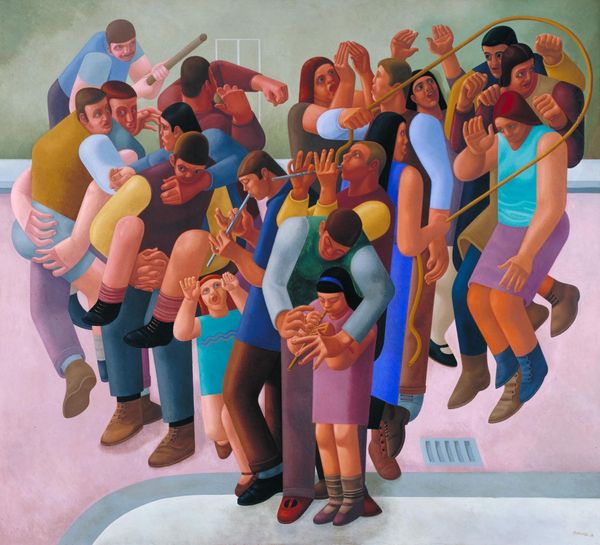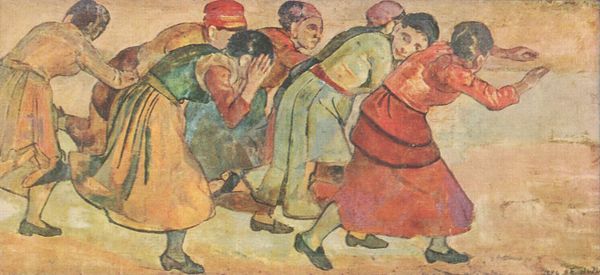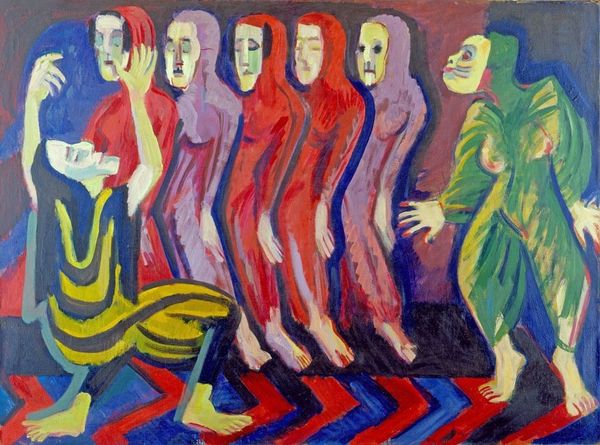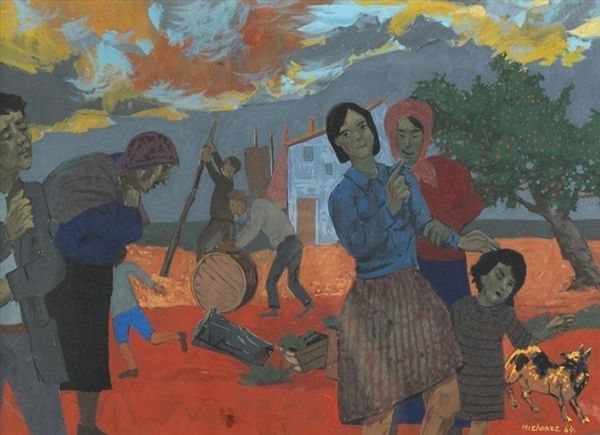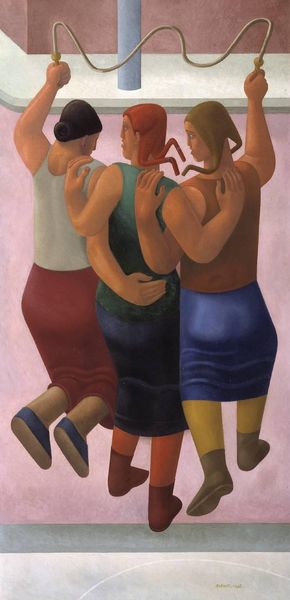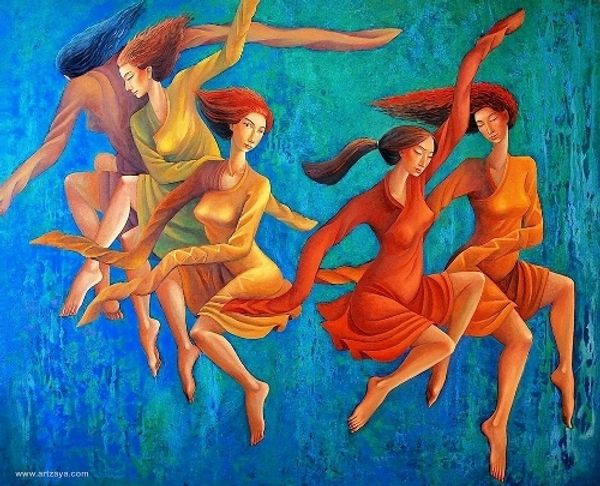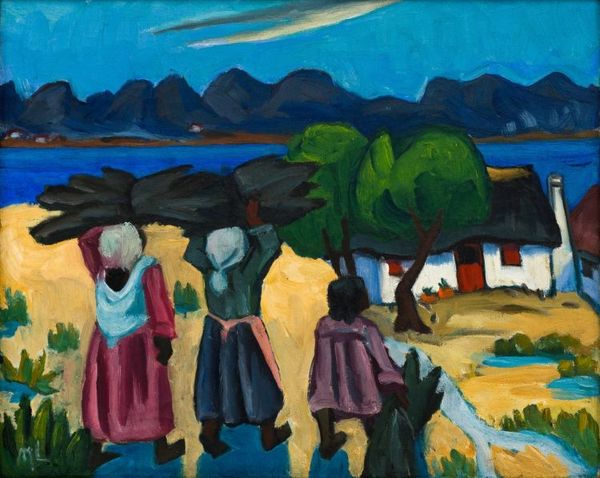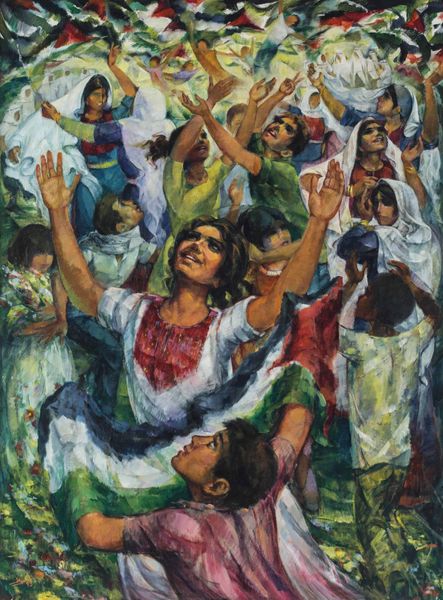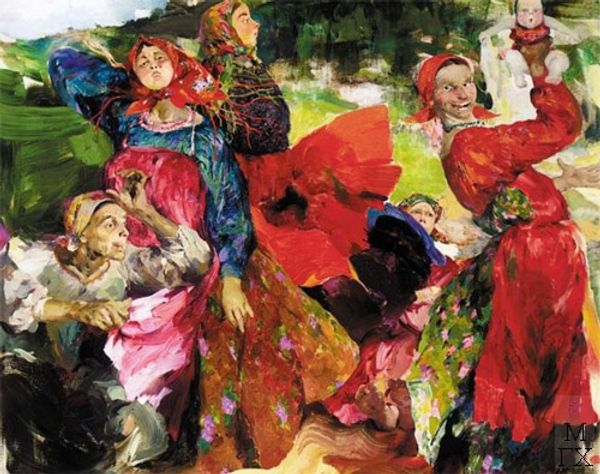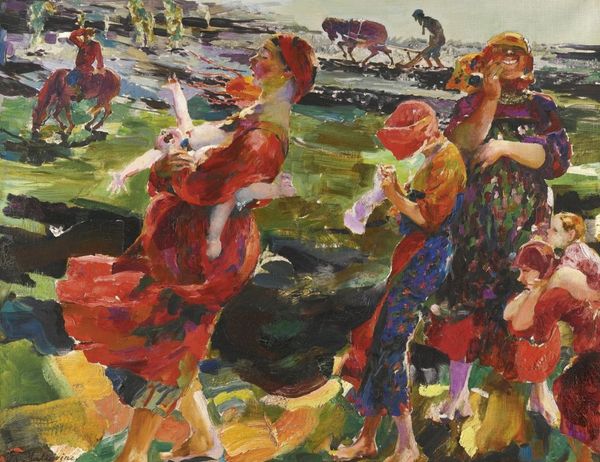
painting, oil-paint
#
portrait
#
painting
#
oil-paint
#
landscape
#
figuration
#
oil painting
#
russian-avant-garde
#
genre-painting
#
fine art portrait
Copyright: Public domain
Curator: This is Kuzma Petrov-Vodkin's "Girls on the Volga," painted in 1915, a rather interesting moment in the development of the Russian avant-garde. Editor: It's striking how he uses these matte, almost chalky textures in the oil paint. It really emphasizes the grounded quality of these women by the water. You almost feel the grit under their bare feet. Curator: There’s a directness in their gaze and poses. It feels like Petrov-Vodkin aimed to capture not just their physical presence but a sort of symbolic weight, anchoring them in their environment and culture. See the recurrence of the color red within the frame. Editor: Absolutely, and it’s so consciously deployed – draped over arms, pooled on the ground – you can see how carefully he built up the layers, those slightly clumsy hemlines giving such a homespun, honest feeling. Did he actually engage with textiles prior? Curator: Not that I'm aware, but this speaks to the inherent Russian aesthetic; the application becomes an embodiment of tradition and labor, so he is clearly very sympathetic to the construction of social status. Consider the positioning: are these girls taking a moment to refresh themselves from work or from play? Editor: The materials lend this incredible accessibility; this is daily life and the way it felt. No preciousness about "high art," but real-life textures, gestures. I wonder who and how many artists Petrov-Vodkin took for assistants? Curator: Considering he taught so much, I imagine assistants would come and go and would be assigned roles, although no such information exists that specifies the work being collaborative. Despite the potential for heavy symbolism in the Russian Avant-Garde and the icon tradition that preceded, I see them primarily as…people. Grounded. Connected. It emphasizes a universal dignity, don’t you think? Editor: I agree, and his clear sensitivity to the means of production—the simple fabrics, the daily actions he presents—creates this lasting connection with his subjects. A moving display. Curator: Exactly. By engaging with Petrov-Vodkin's symbolic use of form and color, one could see beyond the surface to glean deeper insight into the intersection of culture and individual lives in pre-revolutionary Russia. Editor: And I see how grounding art in the everyday materials—in the physicality of the Volga and the labor surrounding it—enables viewers to connect so readily, even now, over a century later.
Comments
No comments
Be the first to comment and join the conversation on the ultimate creative platform.
